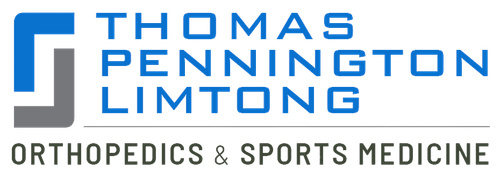We are excited to announce that within the next few months Thomas and Bigler Knee and Shoulder Institute will be expanding our Institute with the addition of 3 additional fellowship trained Orthopedic Surgeons. Two of them will specialize in general orthopedic surgery of all body parts with special emphasis on sports related injuries and joint replacement surgery. The third will be specifically specialize in Joint Replacement surgery of the Hip and Knee. Hip, Shoulder, and Knee replacement and revision surgery will be available as well general care of all other orthopedics conditions. This will increase our Doctors to 5 of the most highly trained and qualified orthopedic surgeons in our community.
Author Archives: Mark
New Doctors!
Reasons For Hip Replacement Surgery
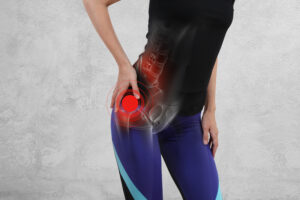 Hip replacement is commonly associated with elderly people, but in reality this life-altering procedure may be for anyone with a worn or damaged hip joint.
Hip replacement is commonly associated with elderly people, but in reality this life-altering procedure may be for anyone with a worn or damaged hip joint.
Hip replacement surgery might be the only option for patients who suffer from persistent hip pain and where more conservative treatment approaches have failed to work. One of the most common reasons for hip replacement is arthritis damage.
Thomas & Bigler Knee & Shoulder Institute, led by board certified orthopedic surgeons Dr. Steven C. Thomas and Dr. Gregory T. Bigler, provides hip replacement surgery to patients in Las Vegas, Nevada as well as greater Pahrump, Bullhead City, Lake Havasu, and Mesquite, NV.
Need for Hip Replacement
Some conditions can cause hip joint damage over time, which may necessitate hip replacement surgery. These include:
Osteoarthritis
This type of arthritis is associated with wear and tear. Osteoarthritis may damage the slick cartilage that covers the ends of hip bone that allow the hip joint to move.
Rheumatoid arthritis
An overactive immune system may cause rheumatoid arthritis. The inflammation occurring due to this condition can cause cartilage erosion, and sometimes erode even the underlying bone. A deformed or damaged hip joint because of this condition may necessitate hip replacement.
Osteonecrosis
Insufficient blood supply to the ball portion of your hip joint may cause the bone to collapse and deform, and hip replacement may be the only treatment option.
Signs You Require Hip Replacement
Here are a few signs that could be indicative of hip arthritis or other problems where hip replacement may be necessary.
Pain in the Hip or Groin
If you experience soreness during or after physical activity or exercise, or pain that interferes with your normal routine, it could be a sign of hip arthritis. This pain is typically localized between the knee and the hip. Some patients may tend to rely on a walking stick or compensate with a limp.
Hip pain may also occur at night and make it difficult for you to fall asleep or have a disturbed sleep because of the pain. This could also be a hip or joint-related problem. Many people take painkillers regularly to carry on their daily routine without pain. If you have these signs, speak to an orthopedic surgeon to discuss possible hip replacement.
Stiffness in the Hip or Pain while Walking
A common sign of hip stiffness is if you find it difficult to put on your shoes or socks, particularly if one foot is causing more stiffness than the other. If the problem persists, talk to a hip specialist.
If the pain in the hip or groin is preventing you from walking even short or normal distances, it could be a sign of hip problem. How much you walk daily will depend on your lifestyle, but if it is causing discomfort and interfering with your daily life, you should consult with an orthopedic surgeon.
One Leg Test
If you are unable to stand on your troubled leg for more than a minute, even with some support from a wall or door, then you could have a problem with your hip. Board certified orthopedic surgeons Dr. Thomas and Dr. Bigler receive patients from Las Vegas, Nevada as well as greater Pahrump, Bullhead City, Lake Havasu, and Mesquite, NV for hip replacement surgery.
For More Information
If you would like to schedule an appointment or learn more about the Knee and Shoulder Institute procedures & treatments performed by Las Vegas, Nevada board-certified surgeons Steven C. Thomas, MD and Gregory T. Bigler, MD. Contact the office today click here.
Serving patients from and around greater Las Vegas, Lake Havasu, Bullhead City, Mesquite, Pahrump, Nevada.
What is Patellar Tendonitis?
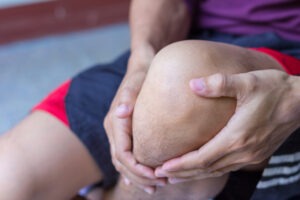 Patellar tendonitis is a commonly occurring inflammation or injury of the tendon that attaches the kneecap (patella) to the shinbone (tibia). The pain caused by this condition may be mild or severe.
Patellar tendonitis is a commonly occurring inflammation or injury of the tendon that attaches the kneecap (patella) to the shinbone (tibia). The pain caused by this condition may be mild or severe.
Patellar tendonitis can occur in anyone. However, it is such a common injury of athletes, particularly those who play basketball and volleyball, that it is known as jumper’s knee. An estimated 14.4 percent of recreational volleyball players have jumper’s knee.
In top professional athletes, the prevalence of patellar tendonitis is even higher. Approximately 40 to 50 percent of top volleyball players have jumper’s knee.
Board certified orthopedic surgeons Dr. Steven C. Thomas and Dr. Gregory T. Bigler provide procedures for the knee and shoulder to patients in Las Vegas, Nevada as well as Greater Pahrump, Bullhead City, Lake Havasu, Mesquite, NV, and surrounding communities.
What exactly causes Patellar tendonitis?
Patellar tendonitis develops due to repetitive stress on the knee, usually from overuse in exercise or sports. The recurring pressure on the knee causes small tears in the tendon that, over time, swell, and weaken the tendon.
The factors that contribute to this condition are as follows:
- Uneven leg muscle strength
- Tight leg muscles
- Hard playing surfaces
- Misaligned feet, ankles, and legs
- Obesity
- Shoes without sufficient padding
- Chronic diseases that weaken the tendon
Athletes are at a higher risk as jumping, running, and squatting put more pressure on the patellar tendon. For instance, running can create a force of up to five times a person’s body weight on their knees.
Extended durations of intense sports training are associated with jumper’s knee.
What are the Symptoms of Patellar Tendonitis?
The initial symptoms of patellar tendonitis are pain and tenderness at the base of the kneecap. The patient may also experience some inflammation and a burning sensation in their kneecap. Getting up from a squat or kneeling down can be particularly painful.
Initially, the pain may be sporadic, developing only after exercise activity or sports. The pain can worsen as the tendon becomes more damaged. It can interfere with any athletic activity and daily tasks such as sitting in a vehicle or climbing stairs.
The patient should consult a doctor if any pain and inflammation persist for more than one or two days.
What’s a typical Treatment Plan?
The treatment approach depends on the severity of the injury.
Conservative approaches to reduce pain, rest the leg, and stretch and strengthen the leg muscles are usually the first line of treatment. The doctor will typically advise the patient a duration of controlled rest, where they avoid activity that puts stress on the knee.
Medication
The doctor may prescribe over-the-counter (OTC) medications for short-term pain and swelling reduction, including:
- naproxen sodium (Aleve)
- ibuprofen (Advil)
- acetaminophen (Tylenol)
In case the pain is severe, the doctor may give the patient a corticosteroid injection in the region around the patellar tendon, which is most effective in the reduction of severe pain.
Therapy
The objective of physical therapy is to reduce the pain and swelling and to stretch and strengthen the thigh and leg muscles.
In case the pain is severe even when the patient is resting their legs, the doctor may advise the patient to wear a brace and use crutches for a while to avoid additional damage to the tendon. The patient can start physical therapy activities when they are relatively pain-free.
Board certified orthopedic surgeons at the Thomas and Bigler Knee & Shoulder Institute receive patients from Las Vegas, Nevada as well as Greater Pahrump, Bullhead City, Lake Havasu, Mesquite, NV, and nearby areas for knee and shoulder procedures.
If you would like to schedule an appointment or learn more about the Knee and Shoulder Institute procedures & treatments performed by Las Vegas, Nevada board-certified surgeons Steven C. Thomas, MD and Gregory T. Bigler, MD. Contact the office today click here.
Serving patients from and around greater Las Vegas, Lake Havasu, Bullhead City, Mesquite, Pahrump, Nevada.
What is a Knee Sprain?
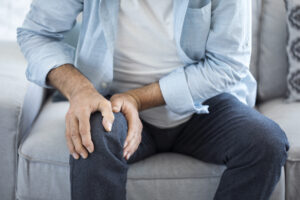 A knee sprain means that a person has injured one of the ligaments around the knee joint. There are four main ligaments that offer stability to the knee.
A knee sprain means that a person has injured one of the ligaments around the knee joint. There are four main ligaments that offer stability to the knee.
In addition, there are various smaller ligaments that can lead to pain after an injury. People often feel confused between sprains and strains. A sprain refers to an injury to a ligament whereas a strain is an injury to a muscle.
Regards the knee, the ligaments enable the knee joint to bend back and forth but control excessive motions. The collateral ligaments of the knee prevent excessive side-to-side movement. Similarly, the cruciate ligaments are vital for rotational and forward/backward stability.
Board certified orthopedic surgeons Dr. Steven C. Thomas and Dr. Gregory T. Bigler provide procedures for the knee and shoulder to patients in Las Vegas, Nevada as well as Greater Pahrump, Bullhead City, Lake Havasu, Mesquite, NV, and surrounding locations.
Symptoms
The most commonly occurring symptoms of a knee sprain are pain and inflammation. In general, people who injure their knee damaging the ligaments will experience immediate symptoms. At times, these symptoms worsen over the initial 48 hours, and gradually subside, depending on the severity of the injury.
The common symptoms of a knee sprain are as follows:
- Inflammation of the knee
- Knee pain
- Instability/giving-out/buckling
- Stiffness of the joint
Causes
A variety of injuries can cause knee sprains. Sometimes the injuries occur due to athletic activities. Knee sprains in athletics can occur because of both contact injuries and non-contact events. Knee sprains usually occur after falls and other trauma at the workplace or at home. These sprains also commonly occur after car accidents.
Treatment
Knee ligament injuries are often graded to define the severity of the injury. A grade of injury offers an indication of the extent of damage to the ligament. Generally, most doctors grade on a scale of one to three.
Grades
Ligament tears are graded as follows:
- Grade I: A minor injury that will likely heal with rest and activity modifications over one to two weeks.
- Grade II: A moderate injury involving partial tearing of the ligament that will require more restrictions on activities and may take four to six weeks for recovery.
- Grade III: A complete or almost-complete tear of the ligament. This may require more extended rehabilitation or surgical intervention, depending of the damaged ligament.
It is vital to bear in mind that these general grades are somewhat arbitrary. In reality, a ligament can sustain damage in various ways across a spectrum, from no injury to a complete tear.
For this reason, these classifications are used most notably to offer athletes an indication of the severity of the injury and a timeline for an expected return to their athletic pursuits.
As mentioned, the main issue with calling an injury a knee sprain is that these words do little to convey helpful information. Understanding the specific ligament injured will assist the doctor and their team to identify the best treatment to make sure that the patient returns to their routine activities as soon as possible.
Board certified orthopedic surgeons at the Thomas and Bigler Knee & Shoulder Institute receive patients from Las Vegas, Nevada as well as Greater Pahrump, Bullhead City, Lake Havasu, Mesquite, NV, and nearby areas for knee and shoulder procedures.
If you would like to schedule an appointment or learn more about the Knee and Shoulder Institute procedures & treatments performed by Las Vegas, Nevada board-certified surgeons Steven C. Thomas, MD and Gregory T. Bigler, MD. Contact the office today click here.
Serving patients from and around greater Las Vegas, Lake Havasu, Bullhead City, Mesquite, Pahrump, Nevada.
PCL (Patella Cruciate Ligament) Injuries or Tear Causes and Treatment
 Posterior cruciate ligament (PCL) injury occurs far less frequently than does injury to the more vulnerable component of the knee, the anterior cruciate ligament (ACL).
Posterior cruciate ligament (PCL) injury occurs far less frequently than does injury to the more vulnerable component of the knee, the anterior cruciate ligament (ACL).
The posterior cruciate ligament and ACL attach the femur (thighbone) to the tibia (shinbone). In case either ligament sustains a tear, it may lead to pain, inflammation, and a feeling of instability.
Board certified orthopedic surgeons Dr. Steven C. Thomas and Dr. Gregory T. Bigler provide procedures for the knee and shoulder to patients in Las Vegas, Nevada as well as Greater Pahrump, Bullhead City, Lake Havasu, Mesquite, NV, and surrounding communities.
Symptoms
Pain
Mild to moderate pain in the knee can lead to a slight limp or challenges in walking.
Swelling
Inflammation in the knee occurs rapidly, within a few hours of the injury.
Instability
The knee might feel loose, as it is going to give way.
In case there are no associated injuries to other areas of the knee, the signs and symptoms of a posterior cruciate ligament injury can be so imperceptible that the patient may not notice that anything is amiss.
The pain might worsen over time and the knee might feel more unstable. In case other portions of the knee have also sustained injury, the patient’s signs and symptoms will potentially be more severe.
Causes
The posterior cruciate ligament may tear if the shinbone is hit hard right below the knee or if a person falls on a bent knee. These injuries commonly occur during:
Motor vehicle accidents
A “dashboard injury” develops when the driver’s or passenger’s bent knee hits against the dashboard, which pushes in the shinbone right below the knee and leads to a tear in the posterior cruciate ligament.
Contact sports
Athletes who are engaged in sports, such as soccer and football, can sustain a tear in their posterior cruciate ligament when they fall on a bent knee with their foot pointed down. In such cases, the shinbone will hit the ground first and move backward. Being tacked when the knee is bent can also lead to this injury.
Risk factors
The most common risk factors for a PCL injury are being in an automobile crash and engaging in sports such as soccer and football.
Complications
Many patients sustain injuries in other structures within the knee, including other ligaments or cartilage, at the time when they injure their posterior cruciate ligament. The patient may have long-term knee pain and instability depending on how many of these structures are damaged. They may also be at an increased risk of eventually developing arthritis in the affected knee.
Treatment
The treatment will depend on the extent of the injury and whether the patient has had it for a while or it just occurred. Surgery is not necessary in most cases.
Medications
Over-the-counter pain relievers, such as naproxen sodium (Aleve) or ibuprofen (Advil, Motrin IB, others), can help reduce inflammation and relieve pain.
Therapy
A physical therapist can help the patient learn exercises that will make their knee stronger as well as enhance its function and stability. They may also require crutches or a knee brace during their rehab.
Surgery
In case the patient has a severe injury, particularly if it occurs in combination with other torn ligaments, damaged cartilage, or a fractured bone, they may need a surgical procedure to reconstruct the ligament. Surgery may also be an option if they have persistent episodes of knee instability despite suitable rehabilitation measures.
The surgery can typically be undertaken arthroscopically by inserting a fiber-optic camera and long, narrow surgical equipment through several tiny incisions around the knee.
Board certified orthopedic surgeons at the Thomas and Bigler Knee & Shoulder Institute receive patients from Las Vegas, Nevada as well as Greater Pahrump, Bullhead City, Lake Havasu, Mesquite, NV, and nearby areas for knee and shoulder procedures.
If you would like to schedule an appointment or learn more about the Knee and Shoulder Institute procedures & treatments performed by Las Vegas, Nevada board-certified surgeons Steven C. Thomas, MD and Gregory T. Bigler, MD. Contact the office today click here.
Serving patients from and around greater Las Vegas, Lake Havasu, Bullhead City, Mesquite, Pahrump, Nevada.
Meniscus Tear Causes And Treatment
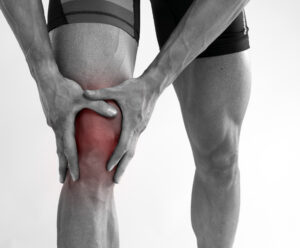 A torn meniscus refers to a tear in the cartilage that is located on top of the tibia to allow the femur to glide smoothly when there is movement in the knee joint.
A torn meniscus refers to a tear in the cartilage that is located on top of the tibia to allow the femur to glide smoothly when there is movement in the knee joint.
Tears are typically described by where they are situated anatomically in the C-shape as well as by their appearance (for instance, longitudinal, parrot beak, “bucket handle” tear, and transverse).
A physical exam may predict whether it is the lateral or medial meniscus that has sustained damaged. At the same time, a diagnostic procedure, such as an MRI or arthroscopic surgery, can locate the particular part of the cartilage anatomy that is damaged as well as show how it appears.
Board certified orthopedic surgeons Dr. Steven C. Thomas and Dr. Gregory T. Bigler provide procedures for the knee and shoulder to patients in Las Vegas, Nevada as well as Greater Pahrump, Bullhead City, Lake Havasu, Mesquite, NV, and surrounding locations.
What Causes a Meniscus to Tear?
A sudden stop or forceful twist can cause the femur’s end to grind into the top of the tibia. This can pinch and potentially tear the cartilage of the meniscus.
This type of knee injury can also develop with kneeling or deep squatting, particularly when lifting a heavy weight. Meniscus tear injuries usually occur during athletic activities, particularly in contact sports such as hockey and football.
Movements that warrant pivoting and sudden stops, in sports such as basketball, tennis, and golf, can also damage the meniscus. The sports injury does not have to occur during a game. It may also occur in practice, where the same movements cause meniscus damage.
Aging increases the risk of developing a torn meniscus as the cartilage starts to slowly wear out, losing its blood flow and resilience. Correlating with this, increasing body weight also puts more pressure on the meniscus.
Treatment
Meniscus tear treatment will depend on its location, severity, and underlying disease within the knee joint. The unique circumstances of the patient may also impact the treatment options.
It is usually possible to treat meniscus tears conservatively in a non-surgical manner using anti-inflammatory drugs and physical therapy rehabilitation to strengthen muscles surrounding the knees and prevent joint instability.
Very often, that is all that a patient requires. Patients who participate in sport or whose work is physically challenging may need immediate surgery to continue their activity. A majority of patients fall between the two extremes, and the decision to use conservative treatments or proceed with a surgery will depend on their specific condition.
Torn Meniscus due to Injury
The initial steps in treatment following acute injury typically include ice, rest, compression, and elevation (RICE). This may help ease the swelling that develop with a torn meniscus. Anti-inflammatory drugs, such as naproxen (Aleve) or ibuprofen (Advil, Motrin), may help relieve pain and swelling.
In case conservative therapy is ineffective, surgery may be a consideration. Knee arthroscopy enables the orthopedic surgeon to examine the cartilage tear and potentially repair it. In a surgical procedure, the goal is to preserve as much cartilage as possible.
Surgical procedures include:
- Meniscal repair: Sewing the torn edges together
- Partial meniscectomy: Trimming away the damaged area, and smoothing the injured region
- Total meniscectomy: Eliminating the entire meniscus, if that is considered appropriate
Another surgical option to promote new cartilage growth is microfracture surgery. In the procedure, the surgeon will drill small holes into the surface of the bone. This encourages articular but not meniscus cartilage development. The articular cartilage that grows due to this surgery is not as robust or as thick as the original meniscus cartilage.
Board certified orthopedic surgeons at the Thomas and Bigler Knee & Shoulder Institute receive patients from Las Vegas, Nevada as well as Greater Pahrump, Bullhead City, Lake Havasu, Mesquite, NV, and nearby areas for knee and shoulder procedures.
If you would like to schedule an appointment or learn more about the Knee and Shoulder Institute procedures & treatments performed by Las Vegas, Nevada board-certified surgeons Steven C. Thomas, MD and Gregory T. Bigler, MD. Contact the office today click here.
Serving patients from and around greater Las Vegas, Lake Havasu, Bullhead City, Mesquite, Pahrump, Nevada.
The Giving Machine

At this time of year, we look forward to time with family and friends and we also count our many blessings as we reflect on how fortunate we are. In fact, wisdom teaches that learning to be grateful is the shortest and surest path toward being happy.
We also consider so many on our planet who are far less fortunate and gifted than us, for whom even challenges we consider minimal are so major. Many of those live within miles of us and at this time of year, the desire to share and to add a little more light in the world resonates a bit stronger. Together, we can make a little difference in our world, one by one.
We would like to invite all of you to visit The Giving Machine @ The Promenade near Francesca’s at Downtown Summerlin. A link below will teach you all about it, so please don’t miss looking at this very brief video.
https://www.comeuntochrist.org/light-the-world/giving-machines
MCL (Medial Cruciate Ligament) Injuries or Tears Causes And Treatment
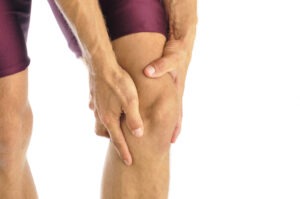 The medial collateral ligament (MCL) is situated on the inner aspect, or part, of the knee, but outside the joint itself. Ligaments connect bones as well as offer stability and strength to a joint.
The medial collateral ligament (MCL) is situated on the inner aspect, or part, of the knee, but outside the joint itself. Ligaments connect bones as well as offer stability and strength to a joint.
The MCL attaches the top of the tibia (shinbone) to the bottom of the femur (thighbone). An injury to the MCL is commonly referred to as an MCL sprain. Ligament injuries may either stretch the ligament or tear it.
MCL injury of the knee typically occurs due to a direct blow to the knee. This type of injury occurs commonly in contact sports. It is typically the result of a blow or hit to the outer aspect of the knee, which causes the MCL to stretch or tear.
Board certified orthopedic surgeons Dr. Steven C. Thomas and Dr. Gregory T. Bigler provide procedures for the knee and shoulder to patients in Las Vegas, Nevada as well as Greater Pahrump, Bullhead City, Lake Havasu, Mesquite, NV, and surrounding communities.
Types of MCL Injuries
MCL injuries can be categorized as grades 1, 2, or 3:
- Grade 1: A grade 1 MCL injury is the least severe, and it signifies that the ligament has been stretched but not torn.
- Grade 2: A grade 2 MCL injury implies that the ligament has been partially torn, which typically leads to some instability in the knee joint.
- Grade 3: A grade 3 MCL injury refers to the severe type of ligament injury, and it means that the ligament is completely torn. A grade 3 MCL sprain commonly causes joint instability.
How’s an MCL Injury Treated?
Treatment options differ depending on the severity of the MCL injury. A majority of MCL injuries will heal by themselves following a few weeks of rest.
Immediate Treatment
Immediate treatment is required to ease pain and help stabilize the knee. The treatment options include the following:
- Applying ice to reduce inflammation
- Raising the knee above the heart to help with inflammation
- Taking nonsteroidal anti-inflammatory drugs (NSAIDs) to ease pain and inflammation
- Compressing the knee using a brace or an elastic bandage
- Resting
- Using crutches to keep weight off the injured knee
Rehab
When recovering from the injury, the goal is to regain strength in the knee and prevent further injury. The treatment options may include:
- Physical therapy to strengthen muscles and enhance the range of motion of the knee
- Wearing a protective knee brace during physical activity
- Restricting activities that can lead to further injury, such as contact sports
Surgery
In rare circumstances, an MCL injury will necessitate surgery. A patient will need surgery when the ligament is damaged in such a manner that it cannot repair itself. It is also undertaken when the MCL injury occurs along with other ligament injuries.
Prior to the surgery, the surgeon may use arthroscopy to properly examine the extent of the injury and to look for associated injuries inside the knee. In arthroscopy, a small and narrow camera is inserted through a small incision, or cut.
Following the arthroscopic exam, the surgeon will make a tiny incision along the inner aspect of the knee. In case the ligament is torn where it connects either to the shinbone or the thighbone, the surgeon can use one of the following to reattach it:
- Large stitches
- Bone staples
- A metal screw
- A device known as a suture anchor
The surgeon will stitch the ligament together if the tear is in the middle of the ligament. Board certified orthopedic surgeons at the Thomas and Bigler Knee & Shoulder Institute receive patients from Las Vegas, Nevada as well as Greater Pahrump, Bullhead City, Lake Havasu, Mesquite, NV, and nearby areas for knee and shoulder procedures.
If you would like to schedule an appointment or learn more about the Knee and Shoulder Institute procedures & treatments performed by Las Vegas, Nevada board-certified surgeons Steven C. Thomas, MD and Gregory T. Bigler, MD. Contact the office today click here.
Serving patients from and around greater Las Vegas, Lake Havasu, Bullhead City, Mesquite, Pahrump, Nevada.
Cartilage or Tendon Damage in Your Shoulder
 In general, shoulder problems occur due to issues with the tendons, muscles, and ligaments, rather than the bones. Tendinitis and/or tears of the tendon(s), such as the biceps tendon and the rotator cuff, are some common conditions of the shoulder.
In general, shoulder problems occur due to issues with the tendons, muscles, and ligaments, rather than the bones. Tendinitis and/or tears of the tendon(s), such as the biceps tendon and the rotator cuff, are some common conditions of the shoulder.
Many individuals with shoulder pain have issues with several structures in their shoulder. For instance, people with tendinitis or bursitis may also have labrum (cartilage) and rotator cuff tears.
Board certified orthopedic surgeons Dr. Steven C. Thomas and Dr. Gregory T. Bigler provide procedures for the knee and shoulder to patients in Las Vegas, Nevada as well as Greater Pahrump, Bullhead City, Lake Havasu, Mesquite, NV, and surrounding locations.
Rotator Cuff Injury or Tear
The rotator cuff refers to the primary structure that moves and stabilizes the shoulder. It comprises four muscles and four associated tendons that connect the muscles to the bones. They create a cuff over the ball-and-socket joint of the shoulder.
Rotator cuff issues can be mild or severe. The cuff may become swollen, frayed, or detach entirely from the bone. A majority of rotator cuff injuries involve the supraspinatus tendon. This tendon is found at the top of the shoulder.
This tendon may get pinched between the ball of the upper arm and the portion of the shoulder blade known as the acromion when a person raises their arm up or out to the side. This pinching of the rotator cuff is called impingement.
Impingement usually leads to swelling of the rotator cuff tendons. Therefore, the resulting injury is commonly known as tendinitis. It also leads to irritation of the bursa (a sac of tissue between the bone and the tendon), so it is often called bursitis. In fact, impingement, rotator cuff tendinitis, and bursitis are all different names of the same problem.
Shoulder Cartilage Tear (Glenoid Labrum Tear)
The ball at the top of the upper arm bone lies in a socket in the shoulder blade known as the glenoid, which is lined with a ring of cartilage and fibrous tissue (labrum). The labrum surrounds the ball of the upper arm and enables it to remain within the glenoid.
The labrum can sustain a tear in multiple ways. A tiny tear may impact only the rim of the labrum. But a more severe tear at the top of the labrum may also impact the biceps tendon and even lead to complete detachment.
Labrum tears can develop due to a shoulder dislocation or from regular wear and tear on the joint.
Biceps Tendinitis
Various tendons connect the muscles to the bones to offer stability and support to the main shoulder joint. The biceps tendon links the biceps muscle to the shoulder blade. This tendon becomes swollen, and the condition is known as biceps tendinitis.
Shoulder Arthroscopy
Shoulder arthroscopy enables the surgeon to use very tiny incisions to view the inside of the shoulder and repair any damage. The surgery typically takes between one to two hours to complete, and the patient will be able to return home on the day of the procedure itself.
The surgeon will use general anesthesia, and the patient will remain asleep during the procedure. They may feel drowsy for several hours following the surgery. Therefore, the patient will need to arrange for someone to drive them back home after the procedure.
Board certified orthopedic surgeons at the Thomas and Bigler Knee & Shoulder Institute receive patients from Las Vegas, Nevada as well as Greater Pahrump, Bullhead City, Lake Havasu, Mesquite, NV, and nearby areas for knee and shoulder procedures.
If you would like to schedule an appointment or learn more about the Knee and Shoulder Institute procedures & treatments performed by Las Vegas, Nevada board-certified surgeons Steven C. Thomas, MD and Gregory T. Bigler, MD. Contact the office today click here.
Serving patients from and around greater Las Vegas, Lake Havasu, Bullhead City, Mesquite, Pahrump, Nevada.
Cartilage or Tendon Damage in Your Knee
 The knee is a complex joint with many elements, which makes it vulnerable to various injuries. Many knee injuries can be effectively treated with simple approaches, such rehabilitation exercises and bracing. Others injuries need surgery to address the issue.
The knee is a complex joint with many elements, which makes it vulnerable to various injuries. Many knee injuries can be effectively treated with simple approaches, such rehabilitation exercises and bracing. Others injuries need surgery to address the issue.
Board certified orthopedic surgeons Dr. Steven C. Thomas and Dr. Gregory T. Bigler provide procedures for the knee and shoulder to patients in Las Vegas, Nevada as well as Greater Pahrump, Bullhead City, Lake Havasu, Mesquite, NV, and surrounding communities.
Anatomy
The knee represents the largest joint in the body as well as one of the most easily injured. It comprises four main components: bones, cartilage, ligaments, and tendons.
Bones
Three bones connect to form the knee joint: the thighbone (femur), shinbone (tibia), and kneecap (patella).
Articular cartilage
The ends of the tibia and femur, and the back of the patella are covered with articular cartilage. This slippery substance enables the knee bones to glide smoothly across each other as a person bends or straightens their leg.
Meniscus
Two wedge-shaped fragments of meniscal cartilage act as “shock absorbers” between the femur and tibia. Distinct from articular cartilage, the meniscus is hard and rubbery to help stabilize and cushion the joint. People typically refer to torn meniscus when they talk about torn cartilage in the knee.
Ligaments
Bones are linked to other bones by ligaments. The four primary ligaments in the knee act as strong ropes to hold the bones together and keep the knee stable.
Tendons
Muscles are joined to the bones by tendons. The quadriceps tendon links the muscles in the front of the thigh to the patella. The patellar tendon stretches the patella from the shinbone.
Meniscal Tears
Sudden meniscal tears usually develop during sports. Some activities that can cause tears in the meniscus are pivoting, cutting, twisting, or being tackled. Meniscal tears may also develop due to aging or arthritis. In case the menisci have weakened with age, a mere awkward twist when getting up from a chair may be enough to lead to a tear.
Tendon Tears
The patellar tendons and quadriceps may become stretched and torn. While anyone can injure these tendons, middle-aged people who play running or jumping sports are more susceptible to these injuries. Direct force to the front of the knee, falling, and landing awkwardly from a jump are some common reasons for knee tendon injuries.
Non-surgical Treatment
Simple measures are used to treat many knee injuries, such as:
-
- Immobilization: The doctor may ask the patient to wear a brace to prevent the knee from moving. In case the patient has fractured a bone, a brace or a cast may hold the bones in position as they heal. The patient may also be given crutches to prevent them from putting weight on their leg.
- Physical therapy: Certain exercises will restore knee function and strengthen the leg muscles that support it.
- Non-steroidal anti-inflammatory medicines: Medications such as ibuprofen and aspirin reduce pain and inflammation.
Surgical Treatment
Many injuries and fractures around the knee necessitate surgery to fully restore leg function. Sometimes, surgery can be undertaken arthroscopically using miniature tools and tiny incisions, such as in the case of many ACL tears. Some injuries require open surgery with a larger incision that offers the surgeon a more direct view and greater access to injured structures.
Board certified orthopedic surgeons at the Thomas and Bigler Knee & Shoulder Institute receive patients from Las Vegas, Nevada as well as Greater Pahrump, Bullhead City, Lake Havasu, Mesquite, NV, and nearby areas for knee and shoulder procedures.
If you would like to schedule an appointment or learn more about the Knee and Shoulder Institute procedures & treatments performed by Las Vegas, Nevada board-certified surgeons Steven C. Thomas, MD and Gregory T. Bigler, MD. Contact the office today click here.
Serving patients from and around greater Las Vegas, Lake Havasu, Bullhead City, Mesquite, Pahrump, Nevada.
